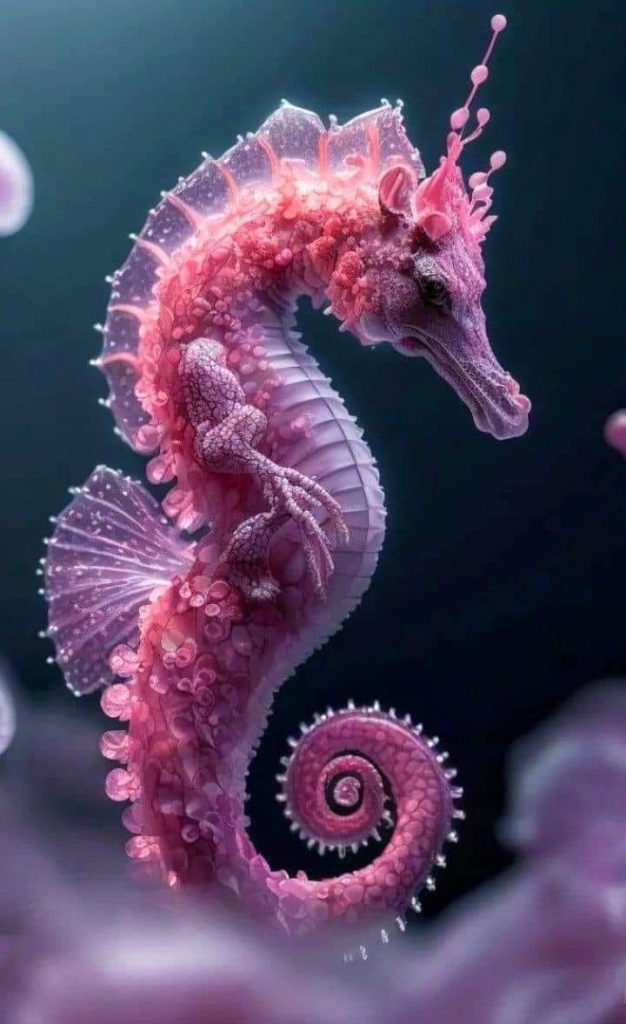I’ve always had a fascination with sea horses…though, to me, they look far more like dragons than horses…
What amazing little creatures!
Found in both tropical and temperate waters all across the globe, seahorses are arguably one of the most distinctive and charismatic marine wildlife species in existence. Ranging in length from more than a foot to under one inch, there are more than 40 known species of these ‘horses of the sea’ recorded by scientists to date. From odd dieting tendencies to adorably romantic relationship rituals, there’s much more to seahorses’ majestic intrigue than their trademark elongated mouths and curly tails. Here are just a few wildly fun facts you may not have known about this charming species.
Seahorse couples are essentially serial monogamists, sticking with one partner for long periods of time. Remaining committed to a single partner enables seahorses to pass through multiple reproduction cycles during each mating season, heightening the likelihood of successful, continuous procreation over time.
Seahorse ladies need not fret when it comes to gestation and childbirth. Perhaps one of their most distinctive traits, the Syngnathidae family stands remarkably unique in that it’s the males that carry the burden of pregnancy, not the females.
Seahorses aren’t just different from other fish in their external appearance, either: they’re also ridiculously poor swimmers. They are the slowest-moving of all fish species because of an impeccably tiny fin in the middle of their backs being the only way to propel themselves. However, while they aren’t all that durable, seahorses are quite unique in that they can not only move forward, but also up, down and backward.
While they do struggle when it comes to speed, that doesn’t mean this species isn’t athletic! Their tails are quite flexible for a reason, enabling them to anchor themselves to coral or seaweed when they’re in need of a rest.
Since they don’t have teeth or even a stomach at all like other marine species do, the structure of a seahorse digestive system is also markedly unique. This makeup results in a digestive process that functions with extraordinary rapidity, requiring the animals to feast constantly on a carnivorous diet of tiny fish and planktonic copepods. Don’t let their small size fool you: seahorses can consume up to 3,000 crustaceans like brine shrimp in a single day, sucking them up through their trumpet-like snouts from as much as three centimeters away.
Sadly, as with most of our ocean life, sea horses are in trouble. Mankind seriously needs to stop using our oceans as trash cans.

When I was a kid, I was always tempted to order seahorses that were advertised on the back of my brother’s comic books. Wish I had just to see what I would have got. Probably one of those foam shaped seahorses that expand when placed in water!
Or Sea Monkeys!
https://www.sea-monkeys.com/
Yes! Those were advertised too! Most likely a bunch of junky novelty stuff like you would get at a carnival made in Taiwan.
LOL…you KNOW Paulo ordered the Ex-Ray vision glasses!
Explains why he wears glasses now, eye strain! 😀